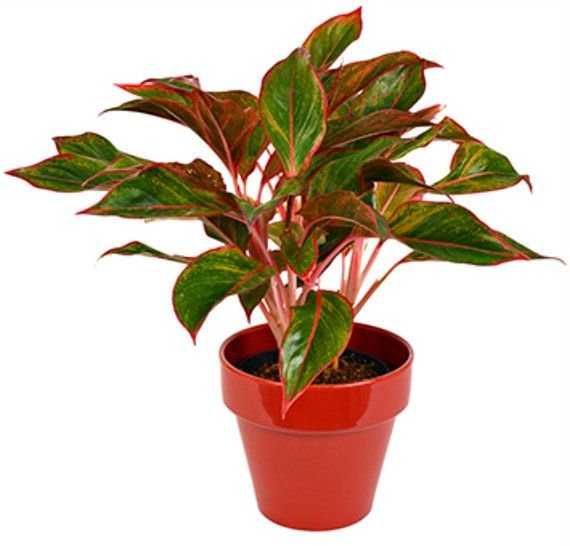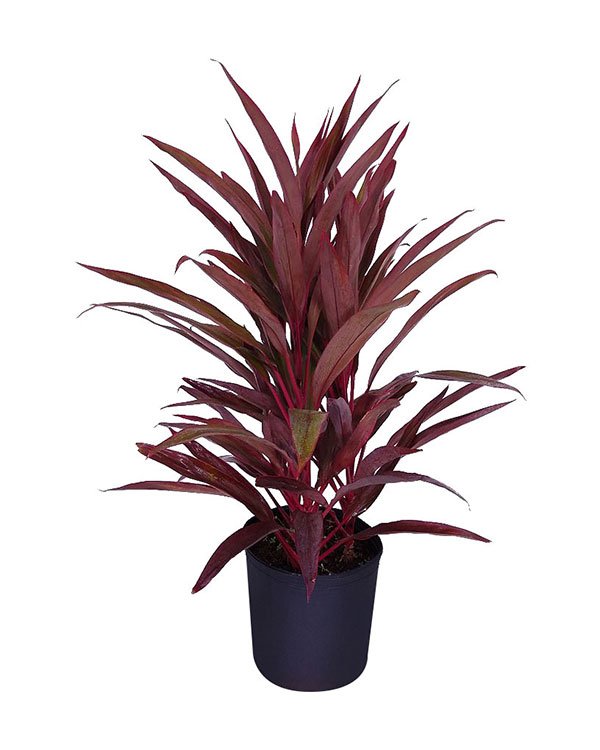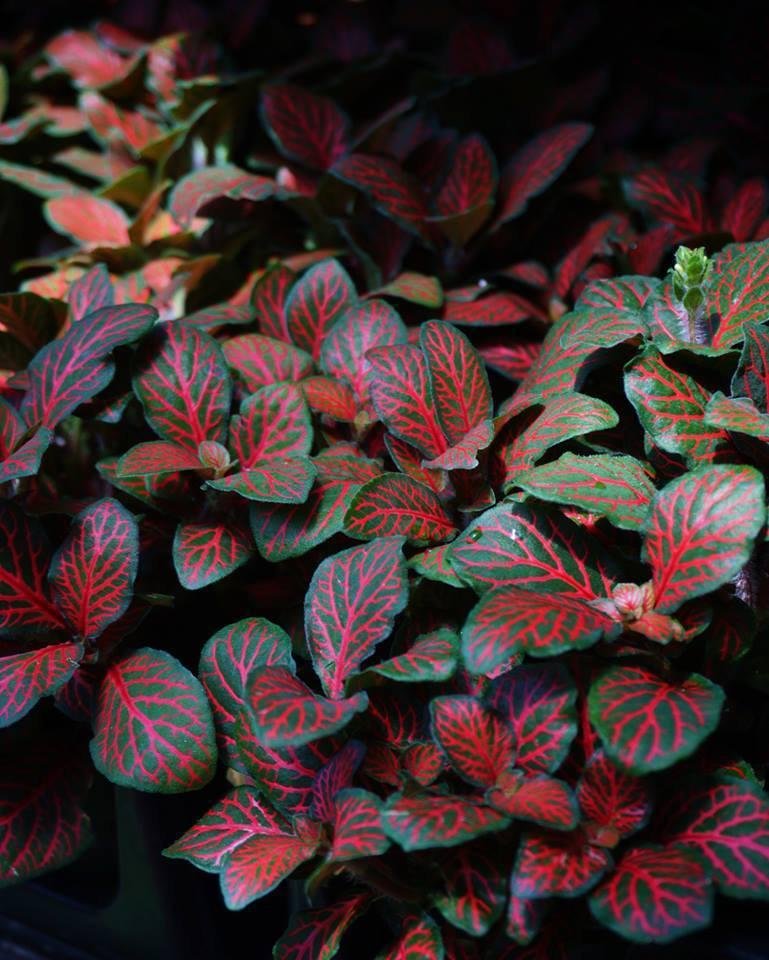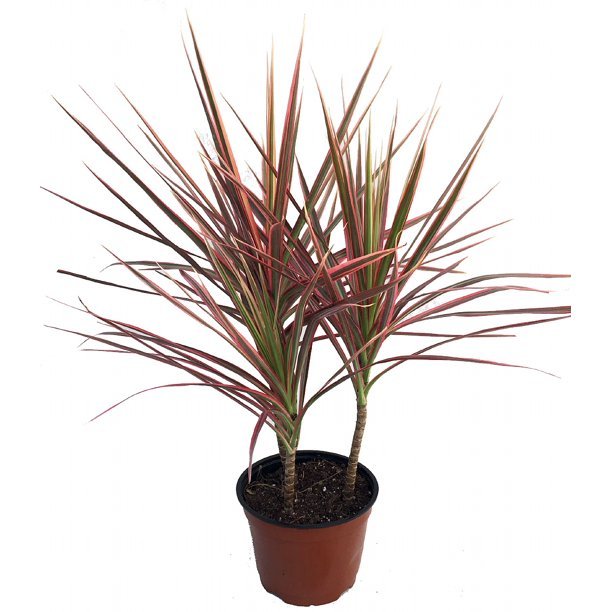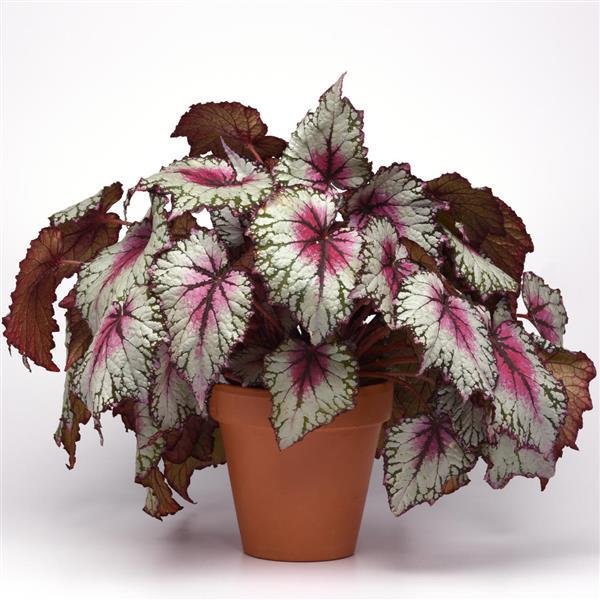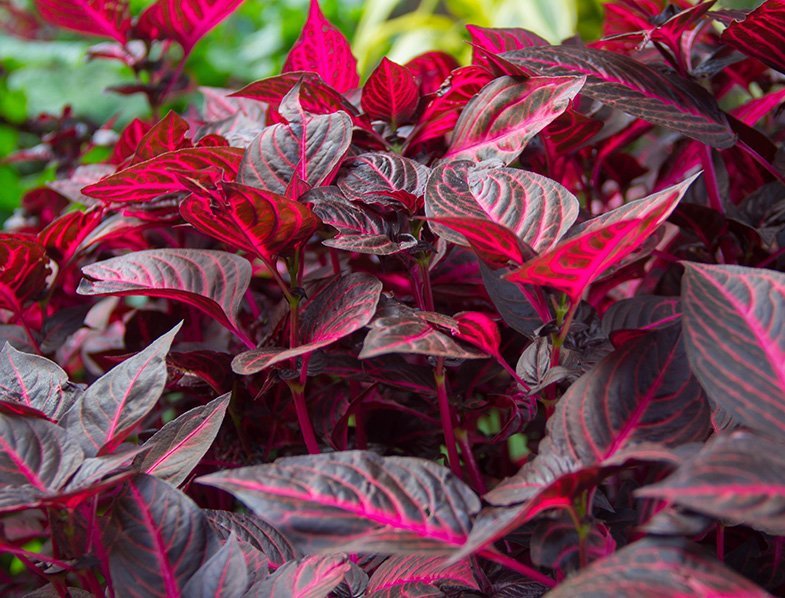10 striking red plants
Adding plants to your living spaces is not only one of the most economical makeover but most likely the most beneficial as well.
Yes plants can make your space more comfortable and cozy and without any doubt prettier but they also carry a multitude of health benefits to those that surround themselves with them.
Different studies have proven that indoor plants will keep you healthier and happier, offering both psychological and physical health benefits.
Adding live plants to your indoor spaces will:
1- Improve your mood
2- Reduce fatigue
3- Lower stress and anxiety
4 - Improve your focus
5- Boost healing and increase pain tolerance
6 - Minimize the occurrence of headaches by improving air quality
7- Ease dry skin and respiratory issues due to dry air
Photo courtesy of @ Croissant
We have previously discussed the MOST GORGEOUS BLACK PLANTS you can add to your home for a striking moody goth chic effect, and we even discussed some of our favorite BLOOMING PLANTS THAT WILL THRIVE INDOOR, but let’s now take a look at the most vibrant and breathtaking red plants that can add a touch of warm romance to your home.
photo courtesy of Hans Vivek
The color red has always been associated with love, passion, and intensity.
It is an invigorating color that arouses passion, it stimulated blood flow, it also stimulates our sense of taste and smell making us more sensitive to our environment. it increases energy.
Chakras are energy centers within the body that help to regulate all its processes. Each chakra governs specific functions and is represented by one of the seven chakra colors.
The Root chakra, also known as Muladhara is represented by the color red. . This chakra is located at the base of the spine and helps us to feel grounded , it is responsible for your sense of stability and security.
Here are some of my favorite red plants that add a bold statement to any room or office space :
1- Red Aglaomena
Aglaomenas are fairly forgiving plants, they can tolerate moist and dry conditions, and they thrive in low light making them one of the most optimal office and home office plants. Keep however in mind that they are mildly toxic to pets. You can read more about COMMON HOUSEPLANTS THAT ARE TOXIC to dogs.
2- Ti Plant - Cordyline Fruticosa
Ti- Plants are bold houseplants that offer deep burgundy leaves , they are dramatic and can add more color to a room than the majority of blooming plants.
They are considered to be good luck charms and when planted outside your home they are said to keep the bad spirits away. They are a great new home gift because of this.
These plants like and require a lot of light so a bright corner is a must.
3 - Caladium Red Flash
Talk about striking! Caladiums come in so many gorgeous hues but this variety is just one of the most eye catching, the color striations on the leaves go from bright red to deep forest green…it is a plant that just gives you that ‘ wow’ factor. Not to mention it’s leaves make amazing additions to any vase arrangement.
Caladiums are bulbs and the are available spring through summer, they do great outdoors in part shade and as an indoor plant they require a well draining soil and lots of bright diffused light.
4- Red Nerve Plant
Nerve plants are native South America.
These tropical plants grow as a ground covers and their slow growth habits make them ideal for dish gardens and terrariums, where they thrive with the help of high humidity.
They do not like dry air, drafts, or direct sun, any of which may cause its leaves to shrivel or fall off.
5- Red Star Dracaena
Red-Margined Dracaena houseplant care is easy and requires only a consistent room temperature, moderate watering, and bright filtered to low light. Also known as Madagascar Dragon Tree, this is a great introductory plant for beginner plant lovers .
Keep this plant away from pets as it is toxic if ingested .
6- Red Polka Dot Plant
Polka dot plants are some of the most bewitching plants I have seen. They are available in pink, light pink, white and red . Their leaves are strikingly colored and accented further by tiny little green spots….how could you not love these?!
They require bright indirect light and like to remain moist and need to be fertilized once a month.
7- Rex Begonia
This perennial can be grown both outdoors in containers and as an indoor plant. It is known for it’s bright and dramatic variegated red leaves. They love bright indirect lights and a very airy potting mix. Their root system does not require deep containers they actually prefer shallower ones. One key is to rotate it often so that the entire plant gets equal light to prevent it from stretching toward the light and become stringy.
They require weekly fertilizer and like to be moist but not overwatered.
8- Coleus
These plants are so gorgeous with striking foliage ranging from neon green to purple, burgundy and of course red.
They are fairly easy to care for, they like bright lights, they love to remain moist at all times and require a well draining soil.
They are one of the easiest plants to propagate, just take a cutting and place it in a glass of water and replant it in soil after the roots are well established.
Just keep in mind a couple of things, they grow pretty fast and they are toxic to pets unfortunately so keep them away from your fur babies reach.
Coleus can be grown indoor and as a container plant.
9- Iresine Blood Leaf
Iresine herbstii is a relatively uncommon plant, but one that's gorgeous in any garden or as a houseplant. There are about 30 species of Iresine plants in the genus, all of them native to the areas surrounding Brazil.
Iresine like a well draining good potting soil, and they like to remain moist at all time. They need the heat though not direct sun, they cannot tolerate temperatures below 50 degrees Celsius.
Feed it with a high nitrogen fertilizer every two to three weeks. This plant should be repotted annually.
10- Anthurium plants are known for their striking bright heart shaped blooms that are surrounded by great hearty foliage in the same shape. As a matter of fact what we call Anthurium blooms are actually not flowers at all but modified leaves of the plant.
These striking plants are fairly easy to care for.
They like a well-lit spot with indirect light. Too much light will burn the leaves appearing in white bleached-looking spots.
You should water your Anthurium when the soil volume is 50% dry. Water thoroughly until you see water flow out of the drainage hole. Discard any excess water in the tray after a few minutes.
They prefer high humidity. Mist often, add a pebble tray or place a humidifier nearby. Dry crispy leaves are often a sign your plant needs more humidity and they prefers average to warm temperatures between 65-80°F. Avoid temperatures below 60°F. Keep your plant away from drafty areas and open vents.
Feed every month in the spring and summer with a fertilizer high in nitrogen or one formulated for Anthurium plants. Dilute the fertilizer to half the recommended strength, and be sure to only apply fertilizer to damp soil.
Anthuriums are toxic to pets and humans if ingested.




